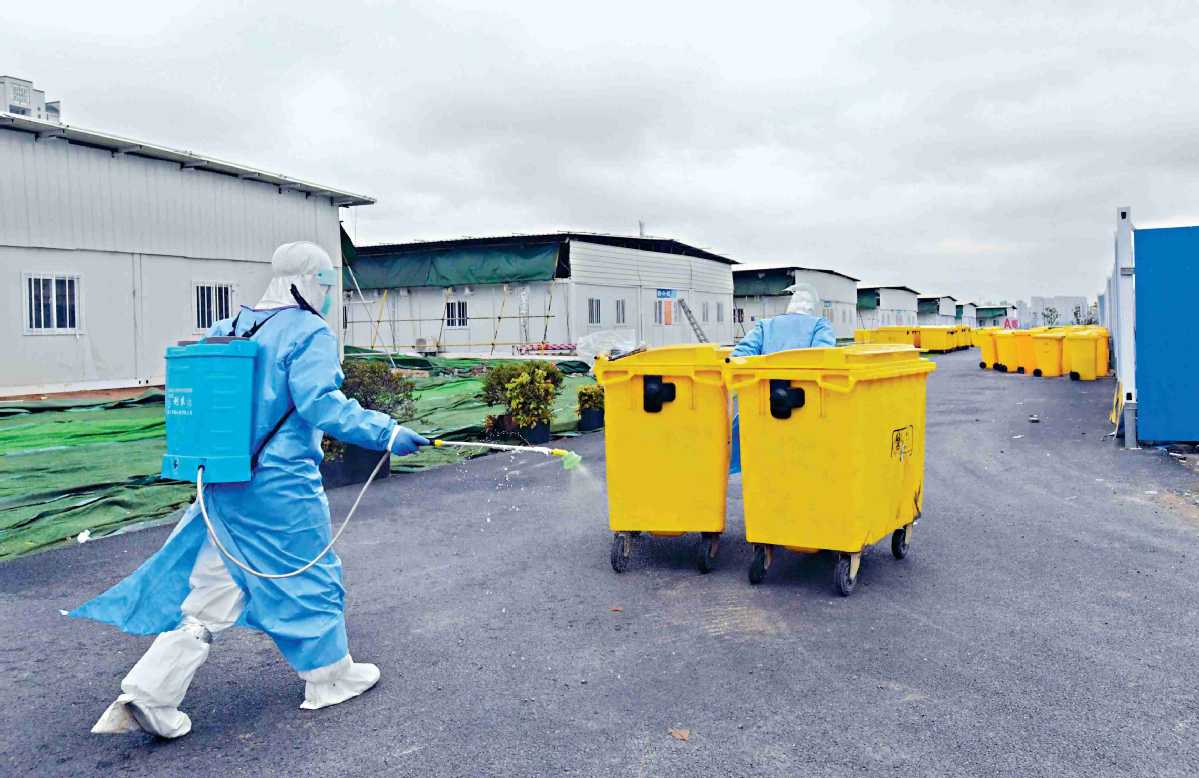How does Wuhan dispose of tons of medical waste amid the epidemic?
It is important to note that the information provided in this Series is intended for your general knowledge only and is not a substitute for professional medical advice or treatment.

The disposal of medical waste is essential to epidemic prevention and control. A surge of COVID-19 patients led to a significant rise of medical waste in Wuhan. The daily output of medical waste soared from about 40 tons to as much as 247 tons, far exceeding the regular processing capacity of 50 tons per day before the outbreak. If mishandled, the rising amount of medical waste may lead to secondary disasters, posing a severe threat to the fight against the epidemic as well as people's health. Faced with such challenges, governments at all levels and related enterprises in Wuhan have made great efforts to optimize the disposal process and improve the disposal capability, fulfilling the goal of achieving total management of newly-added waste within 24 hours.
First, "harmlessness" is incorporated into all the disposal procedures to avoid secondary pollution. During the epidemic, Wuhan strengthens the management of medical waste disposal process to ensure all steps are harmless to the environment. In the pick-up step, domestic wastes in hospitals, quarantine sites and some high-risk areas are collected and disposed of in the same way as medical waste. In the shipping and storing step, specific personnel, vehicles and places are assigned to deal with the waste to avoid any unnecessary exposure to the public. At the same time, law enforcement officials also strengthen on-site supervision to ensure all disposal facilities, manpower and means stick to the law. Such strict and comprehensive procedures ensure that all medical waste is disposed of thoroughly and properly in Wuhan.
Second, multi-pronged measures are taken to increase processing capacity. With the explosive growth of medical waste, the following steps are adopted to improve disposal capacity: (1) a command center has been established to coordinate all the medical waste treatment plants in Wuhan, with many working groups being sent to the front line for guidance and assistance; (2) 17 temporary storage warehouses with a total area of 15,000 square meters have been built to ease the pressures of medical waste storage in the early stage; (3) many idle facilities and abandoned kilns have been mobilized and transformed to assist the disposal of medical waste; (4) a brand new medical waste disposal center was built by CECEP in 14 days, with competent forces from other provinces deployed to ensure its daily operation; (5) 46 portable disposal devices and 149 technicians were mobilized by the Ministry of Ecological Environment to enable on-site disposal of medical waste, alleviating the pressure of transferal; (6) neighboring cities are requested to assist Wuhan, shipping the extra medical wastes back and treating them locally; (7) a mobile app called Yifeitong has been developed to collect and analyze real-time data of medical waste, facilitating the headquarters to make decisions in time and optimize management. By the end of March, the daily processing capacity of medical waste in Wuhan had been improved significantly from 50 tons to 265.6 tons, and Wuhan could finally strike a balance between output and disposal of medical waste.
In addition, it is important to note that relevant government agencies, enterprises, front-line cleaning workers, drivers of transfer vehicles as well as technicians played essential roles in the process and made great contributions to the disposal of medical waste in the city.
References:
[1]《从40吨到峰值247吨,武汉医疗废物应急处置的80天》,央广网,2020年3月30日,http://china.cnr.cn/yaowen/20200330/t20200330_525034937.shtml。
[2]《武汉:医废处置经受应急考验》,人民网,2020年4月3日,http://health.people.com.cn/n1/2020/0403/c14739-31660329.html。
[3]《医疗废物激增,中国如何打赢环境防线阻击战?》,中国新闻网,2020年3月31日,https://baijiahao.baidu.com/s?id=1662679795333109386&wfr=spider&for=pc。
Authors:
ZHONG Sheng, Center for International Knowledge on Development
FANG Yiyou, School of International Studies, Peking University
Please feel free to contact us by sending your questions to question@chinadaily.com.cn or commenting on China Daily app. We will ask experts to answer them.














